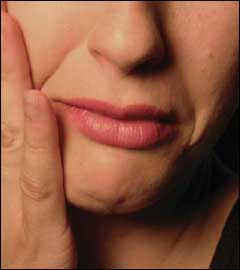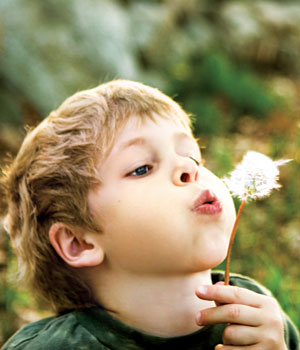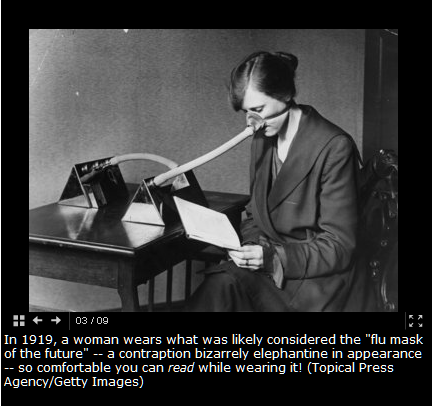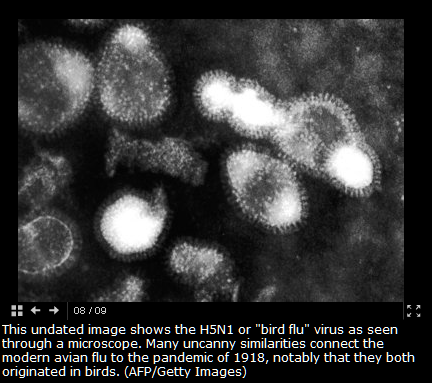Trigeminal neuralgia is a very painful condition of the nerves in the face which often torments those who suffer from it for long periods of time. Western medicine struggles, often quite unsuccessfully, in addressing the discomfort and patients are rarely satisfied with their treatment. Happily, acupuncture is an extremely useful means of addressing this problem and we see many cases of it in our clinic with the vast majority of clients extremely pleased with what we are able to do for them.

Acupuncturists will not only ask the client for a description of where on the face the pain is, but also for a detailed overview of their whole system. The process of doing Chinese medicine properly involves evaluating any one problem, in this case trigeminal neuralgia, against the backdrop of the patient's whole constitution. It often surprises our clients that we seem to be as interested in their digestion, skin, or menstrual cycles as we are in the reason they came in to see us. The reason for this is no one symptom exists in a vacuum and to take care of the problem most effectively, we need to treat the person's whole body. This ensures that not only will the problem be treated, but that it is less likely to return and that the patient is healthier overall.
For reference, I am excerpting and publishing links to a small smattering of the enormous number of articles and studies on acupuncture and Chinese herbal treatment of trigeminal neuralgia below:
A small study showing the utility of acupuncture in the treatment of trigeminal neuralgia:
Research/Articles
From the journal Headache comes a research study evaluating acupuncture for trigeminal neuralgia entitled, Acupuncture Treatment of Chronic Facial Pain -- a Controlled Cross-over Trial. A summary of it can be read here. The patients received 10 treatments over the course of two weeks. The study's summary concludes that,
Traditional Chinese acupuncture was found to be significantly more pain-relieving than placebo acupuncture according to the pain registration of the patients themselves and to their subjective preferences.
In a controlled trial the effect of traditional Chinese acupuncture versus placebo acupuncture was evaluated in 16 patients with chronic facial pain (13 atypical facial pain, 2 atypical and I typical trigeminal neuralgia). All patients suffered from daily pain, the intensity of which was recorded by the patients over a period of 16 weeks. Each patient was treated by traditional Chinese acupuncture as well as placebo acupuncture in a cross-over design following randomization. Each period of treatment comprised 10 treatments during two weeks of hospitalization.
Traditional Chinese acupuncture was found to be significantly more pain-relieving than placebo acupuncture according to the pain registration of the patients themselves and to their subjective preferences.
Effect of Acupuncture in Trigeminal Neuralgia
Tapan K. Chaudhuri, Abhisek Ray. Medical Acupuncture. December 2008, 20(4): 231-237. doi:10.1089/acu.2008.0640.
(excerpted from the complete study, which can be viewed at: liebertonline.com/
Results: Of the 17 patients, 2 did not have classic TN. Three patients did not return after the second treatment. These patients were excluded from this series. Of the remaining 12 patients with classic TN, 4 of 5 men and all 7 women responded with markedly decreased visual analog scale scores (VAS; from mean [SD], 8.75 [1.02] to 1.95 [2.84]; P < .001). Five patients (1 man and 4 women) stayed in complete remission, which has lasted 11–15 months following their last acupuncture treatment. These 5 patients stopped taking all medications for TN. The remainder of the patients have continued to receive acupuncture on an as-necessary basis (mean [SD], 31.65 [18.26] days) for the maintenance of pain relief and no resistance to therapy has developed, with the longest follow-up being 18 months. The patients who had a history of multiple operations and procedures also had a good response. No adverse effects were observed.
Conclusions: Acupuncture produced beneficial effects in the majority of patients in this series. Acupuncture should be considered as a safe therapeutic option in patients with TN, especially before invasive intervention is done.
Definition of trigeminal neuralgia from Acupuncture.com: (see complete article at: acupuncture.com
Trigeminal Neuralgia (TN), also called tic douloureux, is a condition that affects the trigeminal nerve (the 5th cranial nerve), one of the largest nerves in the head. TN is primarily known for the intense level of pain it causes. The trigeminal nerve is responsible for sending impulses of touch, pain, pressure and temperature to the brain from the face, jaw, gums, forehead and around the eyes. The disorder is more common in women than in men and rarely affects anyone younger than 50.
What are the symptoms of trigeminal neuralgia?
TN is characterized by a sudden, severe, electric shock-like or stabbing pain typically felt on one side of the jaw or cheek. The attacks of pain, which generally last several seconds and may be repeated one after the other, may be triggered by talking, brushing teeth, touching the face, chewing or swallowing. The attacks may come and go throughout the day and last for days, weeks or months at a time.
A small research study: (see complete article at: acupuncture.com
Practical Application of Meridian Acupuncture Treatment for Trigeminal Neuralgia
By Beppu S; Sato Y; Amemiya Y; Tode I.
Practical application of meridian acupuncture treatment for trigeminal neuralgia.
Anesthesia and Pain Control in Dentistry, 1992 Spring, 1(2):103-8.
(UI: 93005964)
Abstract: This report evaluates the effect of meridian acupuncture treatment on trigeminal neuralgia. Ten patients aged 26 to 67 years (mean 55.4 years) who visited the outpatient Dental Anesthesiology Clinic at Tsurumi University Dental Hospital from 1985 to 1990 were studied. Five of the patients suffered from idiopathic and five from symptomatic trigeminal neuralgia. The patients underwent meridian treatment by acupuncture alone or acupuncture combined with moxibustion. The acupuncture method used was primarily basic treatment employing only needles without electrical stimulation. Meridian acupuncture treatments were repeated from two to four times a month.
Five patients were restored to a pain-free state. The other five patients noted a decrease in pain, but with some level of pain remaining (significant pain in one patient). It is concluded that meridian acupuncture treatment is useful and can be one therapeutic approach in the management of trigeminal neuralgia.
From China:
Therapeutic effect of acupuncture at local acupoints on trigeminal neuralgia
Zhang XY.
Sanya City TCM Hospital, Hainan, China. yangyang496@eyou.com
OBJECTIVE: To search for an effective method for increasing therapeutic effect on trigeminal neuralgia. METHODS: Ninety cases of primary trigeminal neuralgia were randomly divided into a deep needling group and a routine needling group, 45 cases in each group. The routine needling group were treated by shallow acupuncture at local acupoints and distal acupoints along the Hand and Foot-Yangming Channels, and the deep needling group were treated by acupuncture at the above acupoints and deeply needling at the local acupoints to nerve stem for 3 courses. RESULTS: In the deep needling group 12 cases were clinically cured, 24 cases were markedly effective, 7 cases improved and 2 cases were ineffective, with a total effective rate of 95.6%; and in the routine needling group, the corresponding figures were 7, 15, 12, 11, 75.6%. The therapeutic effect in the deep needling group was better than that in the routine needling group (P<0.05). CONCLUSION: Deeply needling local acupoints plus acupuncture at distal acupoints along the Hand and Foot-Yangming Channels can increase significantly the therapeutic effect on trigeminal neuralgia.
 Wednesday, February 17, 2010 at 12:20AM
Wednesday, February 17, 2010 at 12:20AM  Chicago,
Chicago,  acupuncture,
acupuncture,  asthma,
asthma,  breathing,
breathing,  herbs
herbs 


